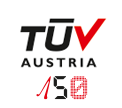What does the Construction Products Regulation (CPR) govern?
The Construction Products Regulation (EU) No. 305/2011 governs the free movement of harmonized construction products in Europe. These are construction products for which either harmonized European standards (such as EN 1090-1) or European approvals (ETA, such as for anchor bolts) exist. These construction products may only be placed on the market with the CE marking.
What is a construction product?
“The term ‘construction product’ means any product or construction kit which is manufactured and placed on the market in order to be permanently incorporated into structures or parts thereof and the performance of which affects the performance of the structure with respect to the basic requirements for structures” (CPR Art. 2 Section 1).
What are the basic requirements for structures?
The CPR lays down seven basic requirements in Appendix 1. The first basic requirement “Mechanical strength and stability” is decisive for EN 1090 components.
What is a construction kit?
“The term ‘construction kit’ refers to a construction product which is placed on the market by a single manufacturer as a set of at least two separate components which must be joined together in order to be put into the construction work” (CPR Art. 2 Section 1).
In steel construction this is the normal case. Numerous load-bearing components such as support columns, girders, transoms, purlins, bracings, bolts, etc. are joined together on site to form a structure/supporting framework, i.e., steel hall, carport, railing, etc.
EN 1090 construction products can therefore be either individual components (support columns, girders, etc.), construction kits (consisting of numerous load-bearing components) or pre-assembled subassemblies (such as welded subassemblies) which are manufactured at the manufacturer’s factory and then placed on the market with the CE marking.
What is the purpose of the Declaration of Performance (DoP)?
The DoP is a requirement of the Construction Products Regulation and serves to disclose the instances of performance declared and thus assured by the manufacturer (component properties such as design class EXC, tolerances, materials, load-bearing capacity, corrosion protection, etc.) with regard to the essential characteristics.
For what essential characteristics do instances of performance have to be declared?
The essential characteristics for which instances of performance (NPDs if applicable) must be declared are specified in EN 1090-1 Table ZA.1: Tolerances for dimensions and shape, weldability/fracture toughness, load-bearing capacity, fatigue strength, fire resistance, fire behavior, release of cadmium/radioactive radiation and durability (corrosion protection).
What responsibility is associated with the DoP?
By submitting the Declaration of Performance, the manufacturer assumes responsibility for the conformity of the load-bearing components with the declared instances of performances. In order to ensure the declared instances of performance, the manufacturer must apply in-house factory production control.
How long must the DoP be retained?
For ten years from the date of placement on the market
What is the CE marking for?
The CE marking is used by manufacturers to confirm to customers, dealers, public authorities, market supervision, etc. that the components comply with the declared performance. The CE marking is also a passport for the free movement of goods to all EU and EEA countries (Norway, Iceland & Liechtenstein) and Switzerland.
Can a DoP and CE marking be issued for a steel hall?
No, DoP and CE marking labels can only be attached to individual components (such as support columns & girders) and to kits (a set of load-bearing components assembled on site) or to pre-assembled subassemblies produced in a manufacturing plant and placed on the market with the CE marking.
Where does one affix the CE marking?
The CE marking is applied on the structural component itself, on a label attached to it, on the packaging or on accompanying documents.
When does one affix the CE marking?
The CE marking must be affixed before the product is placed on the market, i.e., no later than when the first components are delivered.
Who is responsible for issuing the DoP and CE marking?
The manufacturer is responsible for both (CPR Art. 11).
Which regulations apply to installation of components at the construction site?
National building regulations apply to the installation of CE-marked components. In Austria, these are the respective national building regulations / OIB Guideline 1 / Eurocode and in succession EN 1090-2/3. EN 1090-2/3 implementation standards represent the state of the art and are inevitably produced when the Eurocode is applied. The Construction Products Regulation and EN 1090-1 are irrelevant at the construction site because the components have already been placed on the market.
For special cases where load-bearing components are manufactured directly on the construction site instead of at the factory, they are exempt from CE marking according to CPR Art. 5 b). They are, however, subject to national building regulations and thus again to the EN 1090-2/3 implementation standards.
